Program principles and content
The TAF program showcases the principles affecting the educational system and basic education in Finland, as well as the practices and actions that stem from them. The program is made up of 14 modules, each of which will cover one theme in theory and in practice.
At TAF, we encourage participants to reflect on their own teaching concepts and methods, and to then adapt Finnish ideas to their own cultures and contexts.
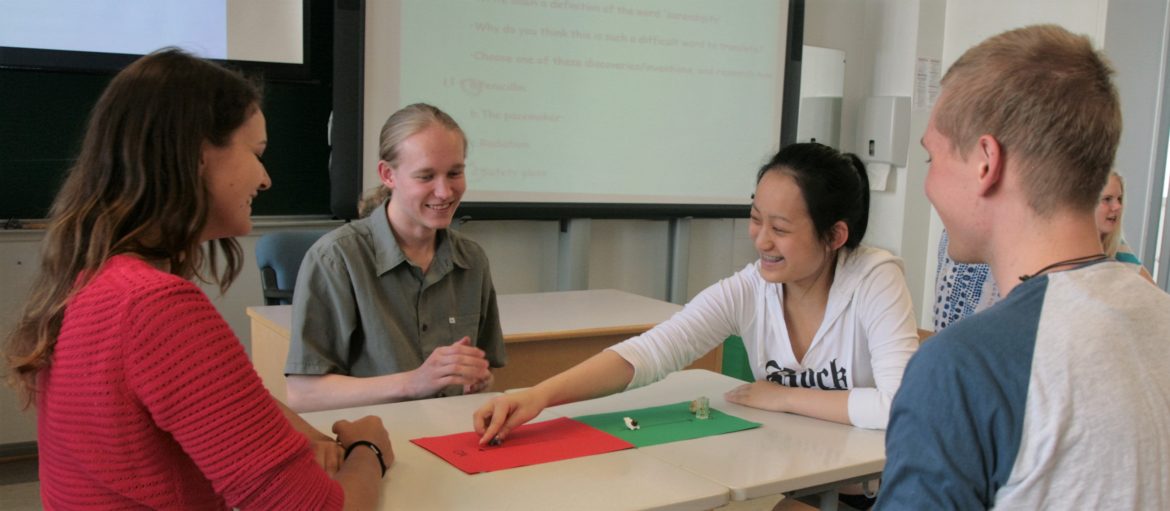
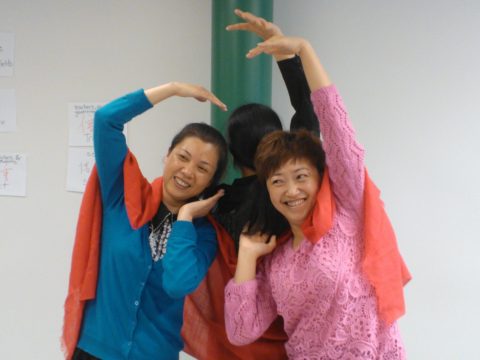
Completing the program will earn participants 30 ECTS credits. The ECTS – European Credit Transfer and Accumulation System – enables the recognition and transfer of credits from one educational system to another. One ECTS credit is worth 27 hours of student work, which can comprise in-class, virtual, group or independent learning to name a few.
The Program Content:
Click here to expand all modules, click on their names to expand one module
- Finnish society, culture and the educational system (1 ECTS credit)
- Finnish society and culture
- History of Finnish education
- Finnish education system
- Principles behind Finnish basic education
- Group building, getting to know each other, setting ground rules for study group
- Creating individual learning plans
- Getting to know Tampere and the surrounding area
- Methods used: individual/pair presentations, group-building techniques, learning diary, narratives in education
- Learning materials: Finnish Lessons by Pasi Sahlberg, 100 Social Innovations from Finland by Ilkka Taipale
- Learning concepts in the Finnish educational system (2 ECTS credits)
- The history of the concept of learning: from teaching to learning
- What is learning: meta-skills in learning , learning to learn
- Basic rules in learning
- How to promote learning
- Teaching, guidance and coaching
- The role of the teacher in Finland
- Portrait of the Finnish teacher
- Methods used: activating and co-operative learning methods, digital story telling
- Study week in a Finnish School
- Curriculum in Finnish basic education (3 ECTS credits)
- Legislation concerning education in Finland
- The history of curriculum in Finnish basic education
- The core curriculum
- Analyzing the curriculum
- Regional, municipal and school’s own curriculum
- Curriculum reform in Finnish basic education in 2016: what, why and how
- Curriculum work at schools
- Curriculum in practice: freedom and responsibility in Finnish schools
- Learning materials based on curriculum
- Methods used: individual/pair presentations, investigative learning, comparative study, group exam
- Teaching methods and the promotion of learning (2 ECTS credits)
- Promoting learning in practice, diversity of methods
- Co-operative learning
- Activating learning methods
- Self-directed learning
- Investigative learning, phenomenon based learning
- Digital apps promoting learning
- Sharing good practices
- Methods used: co-operative learning, activating learning methods, rehearsal teaching sessions
- Study week in a Finnish school
- Information and communication technology in basic education (1 ECTS credit)
- Digital change in Finnish education
- From information seeking to information creating
- Multiliteracy
- Media education
- ICT devices, applications and programs in basic education
- Digital teaching and learning applications
- Digital learning materials
- ePortfolio
- An overview on the electronic matriculation examination
- Methods used: lectures, workshops, own experiments and material trials, learning assignments, creating own ePortfolio, participating in the national ITK -seminar
- The module is organized by the School of Information Sciences / University of Tampere
- Assessment and evaluation in Finnish education (3 ECTS credits)
- Curriculum-based evaluation
- Continuous assessment
- Methods for evaluation
- Tests and grading
- Self-assessment
- Feedback vs. feed forward
- Evaluation discussions with pupils and parents
- Methods used: Ascent assessment for participants, lectures, comparative individual and group work, individual presentations
- Study week in a Finnish School
- How to teach subject matter (3 ECTS credits)
- Subject-related pedagogy, subject-related teaching methods
- Individualising according to every students interests: mathematics, mother tongue, English (foreign language), science, practical subjects
- Methods used: own experimentations, rehearsal lessons
- Curriculum reform : from what to how, broad-based competences in the core curriculum:
- Thinking and learning
- Cultural competence, interaction and expression
- Looking after oneself, managing daily activities, safety
- Multiliteracy
- ICT competence
- Competence required for working life and entrepreneurship
- Participation, empowerment and responsibility. (Curriculum 2016)
- Practicing in a Finnish School
- Special education, integration, support systems and guidance in Finnish education (3 ECTS credits)
- Special education in Finnish education system
- Legislation conducting special education in Finland
- Guiding principles of provision of support
- Three levels of support:
- General support for everyone
- Intensified support (support needed)
- Special support (for pupils with special needs)
- Integration and inclusion in Finnish schools
- Counseling and guidance
- Methods used: lectures and group work
- Visits to special schools, integrated classes, flexible basic education classes etc.
- Leading learning (1 ECTS credit)
- School administration in Finland
- School’s economy and financing
- School’s vision, values, operational culture
- Pedagogical leadership
- The elements of principal´s competence
- administration, finance
- networking
- organisational development
- human resource leadership
- self development
- to enable and facilitate the working community´s ability to work
- Knowledge management
- Principal’s power and responsibility
- School timetables
- Methods used: lectures, group work, principal interviews in Finnish schools
- Learning environments and collaboration in Finnish schools (1 ECTS credit)
- What is a learning environment?:
- technological
- spaces and buildings
- ”real world”
- media
- interaction communication and the social environment
- summary: pedagogical environment
- A learning environment is a place, community or method that promots learning and know-how
- Library and museum co-operation
- Field trips: library, museum, Taite, PiiPooArt Centre, HeurekaScience Center etc.
- Participating in a study camp
- What is a learning environment?:
- The school as a learning community (1 ECTS credit)
- The community of leadership
- Structure
- Competences
- Co-operation
- Knowledge and skills of modern pedagogy
- Evaluation
- Interaction between co-creators of learning community (principal, teachers, pupils, parents, co-operators, community)
- Teachers’ team work
- Co-operative models of teaching: joint teaching, simultaneous teaching
- Student bodies
- School-parent co-operation, parent associations
- Anti-bullying program
- Facilities in Finnish schools: school lunches, extra-curricular activities etc.
- Methods used: lectures, group work
- The community of leadership
- The Future of education (2 ECTS credits)
- The future of education in technology-rich environments?
- What are the emerging trends?
- How are the paradigms of learning changing, or are they?
- What do future learning environments look like?
- What is the role of teacher?
- What are our students like? How do they learn?
- How do the changes in students’ living worlds and learning environments affect their cognitive processes and learning?
- Methods used: on-line course, group meetings
- The future of education in technology-rich environments?
- Summary of own portfolio work (2 ECTS credits)
- Documenting and reflecting on your work for the duration of the program
- Putting together your e-portfolio
- Own project work (5 ECTS credits)
- A central part of the TAF’s program is the creation of a development project plan by each participant. Participants must concretely describe how they plan to apply what they have learned at TAF in their own country.
- The development project plan will be presented to the other participants towards the end of the program. Participants will then receive teacher as well as peer feedback on their plan.
- The plan must concretely outline the vision, stages, strategic actions as well as the resources needed to carry out the project. The project plan will be evaluated as follows: pass/ to be completed/ fail.
- After the project plan has been accepted and other course work has been completed, a celebratory ceremony will be organized, where participants will receive their Teacher Academy Finland program certificate.
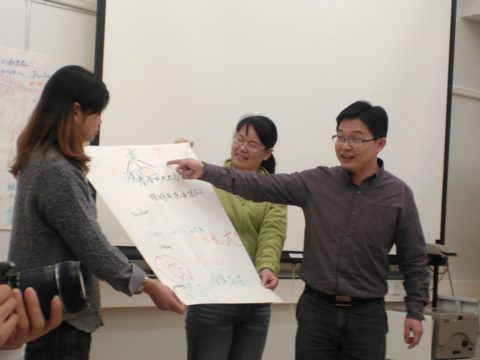
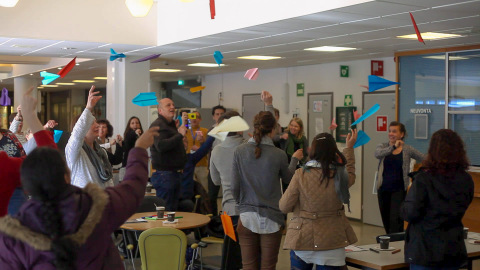
Working methods during the program
Each module includes on-campus learning at the Teacher Academy Finland and shadowing and practice (internship) in Finnish comprehensive schools. Read more about internship periods here.
The program is designed based on research and on a deep understanding of the Finnish educational mindset. It takes a practical approach and develops each teacher’s skills and capacities. The focus is to mirror educational mindsets and practices, as well as to develop the participant’s own thoughts on education and learning.
The program is stimulating and based on practical application. During TAF, the participants will be introduced to a variety of teaching and learning methods used in Finnish Basic Education. Participants will have the opportunity to practice these methods, and to learn to use them in their own work.

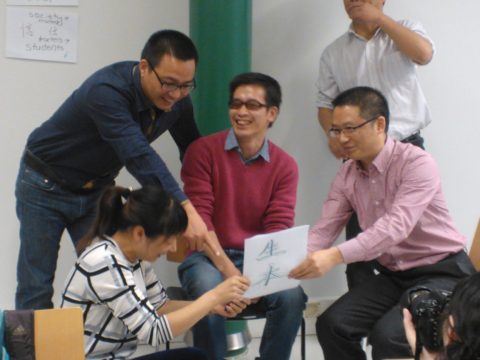
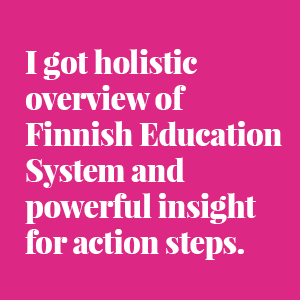
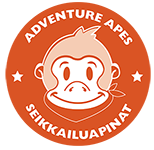
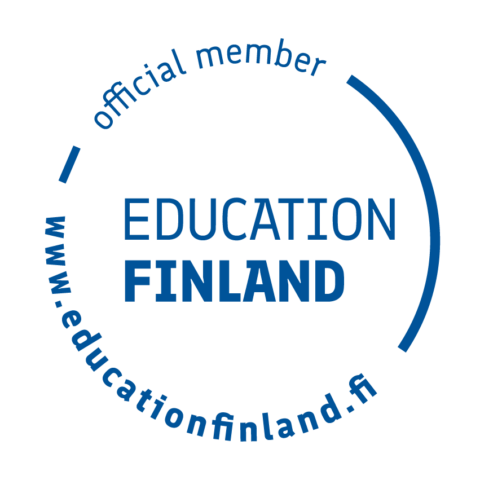
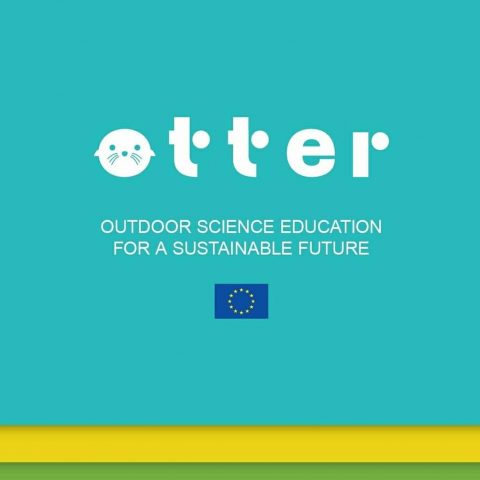

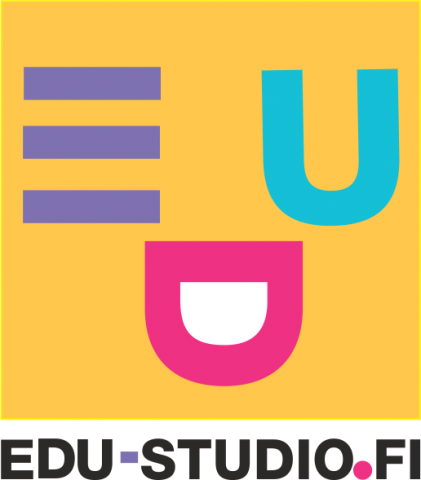
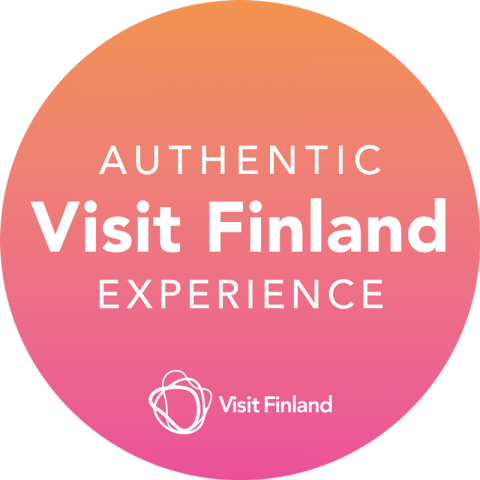
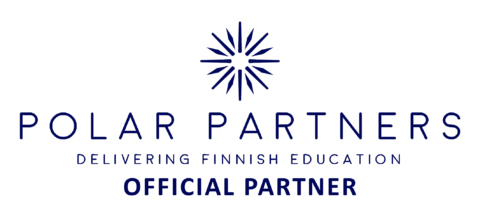
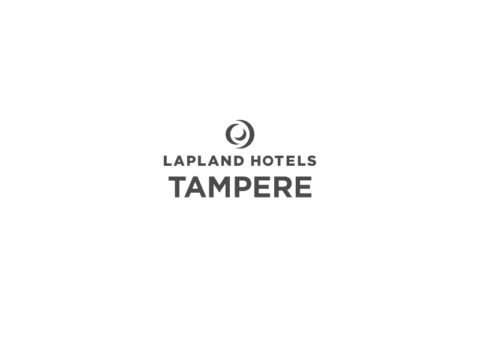
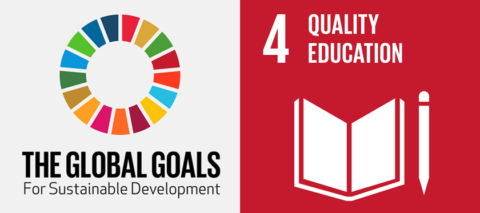

Follow us: